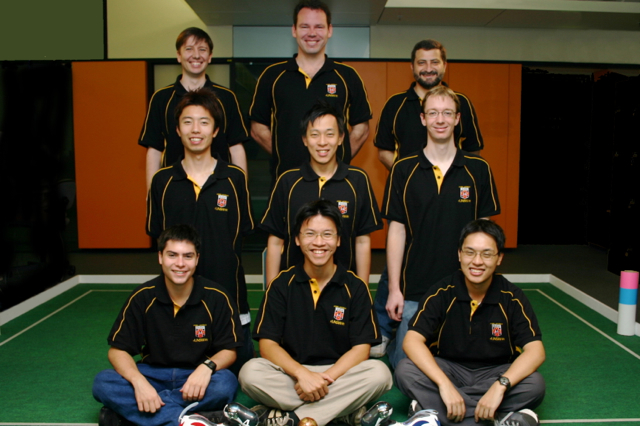Competition Results
Standard Platform League
4-Legged League
Robots Timeline
With the competition being “Open Source” (the source code is published at the end of the year so that AI improves all around the world), UNSW has to work hard at not only gain an edge, but to also out-do themselves each year. The core team of UNSW RoboCup uses a mix of university students and collaborators, all of whom have to learn about Robocup’s technology from scratch before contributing to the team. Our team members have produced a number of publications which have been crucial in our success.
Competition Results
Standard Platform League
The Standard Platform League is the current league that rUNSWift competes in. The league became the SPL in 2007 and since then we have been World Champions in 2014 and 2015, and continue to be very competitive internationally.
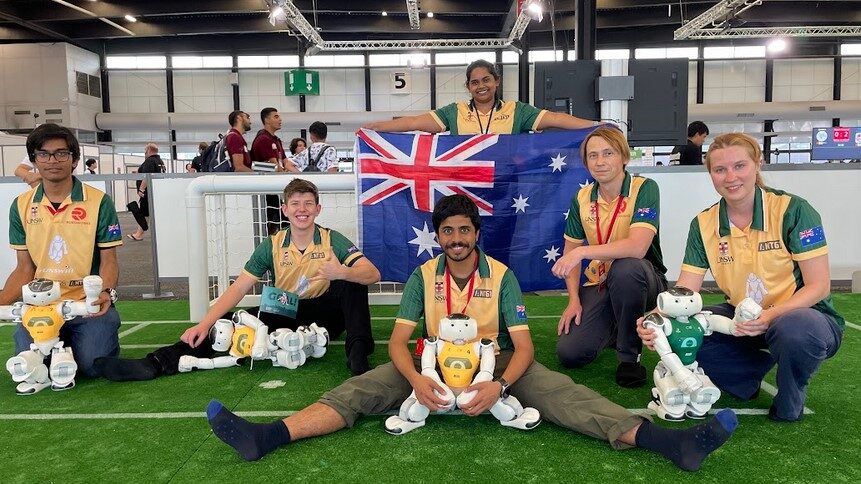
2023 Bordeaux, France
World: 3rd Place
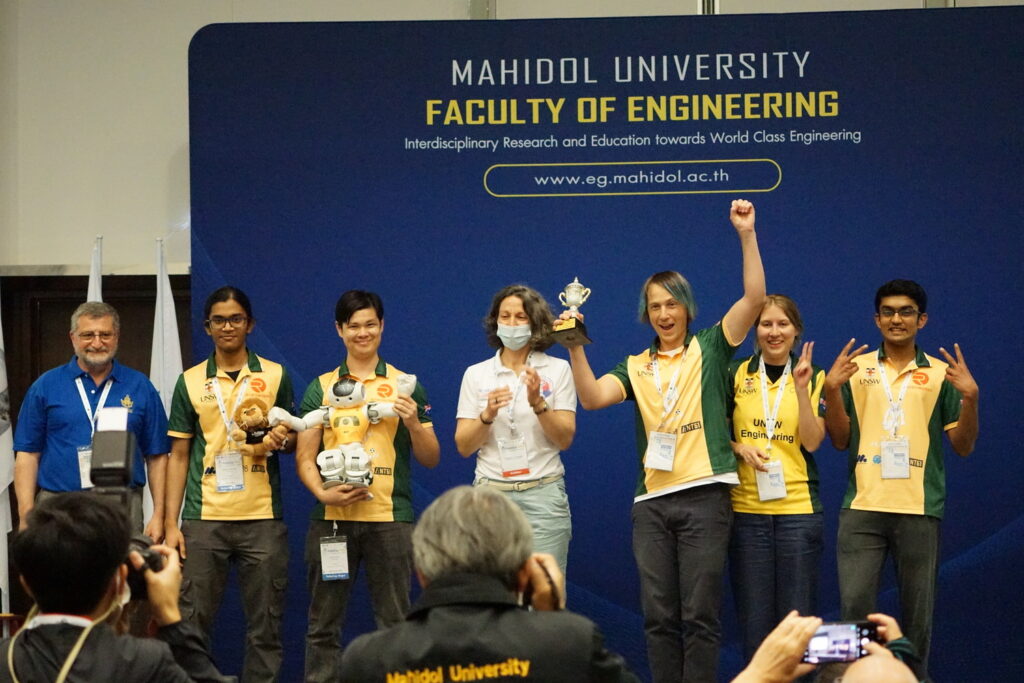
2022 Bangkok, Thailand
World: 3rd Place
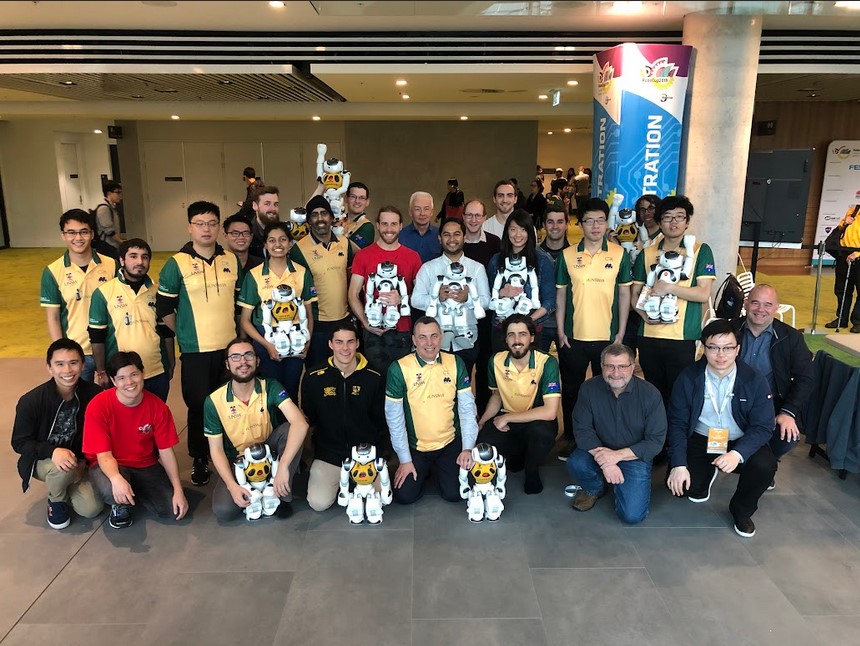
2019 Sydney,Australia
World: 3rd Place
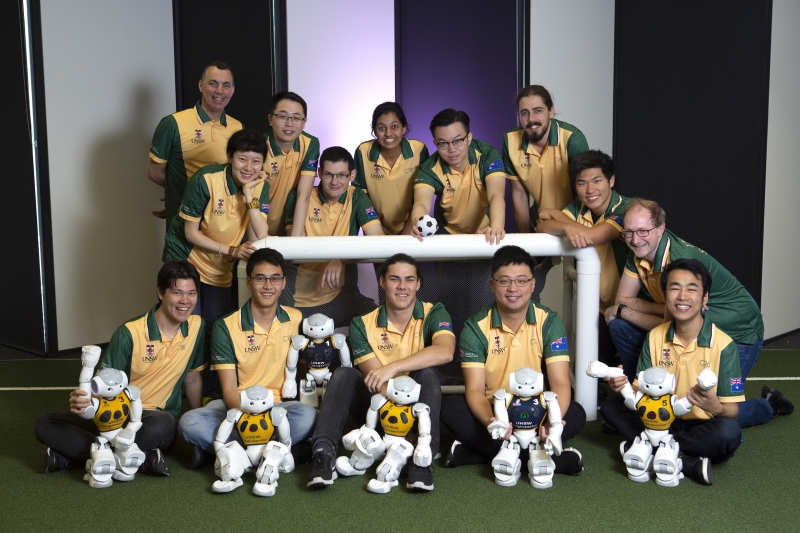
2018 Montreal,Canada
World: Quarter-finalists
Mixed Team Competition: 1st Place
Sponsor: NSW Trade and Investment

2017 Nagoya,Japan
World: Quarter Finalist
Mixed Team Competition: 3rd Place
Sponsor: NSW Trade and Investment
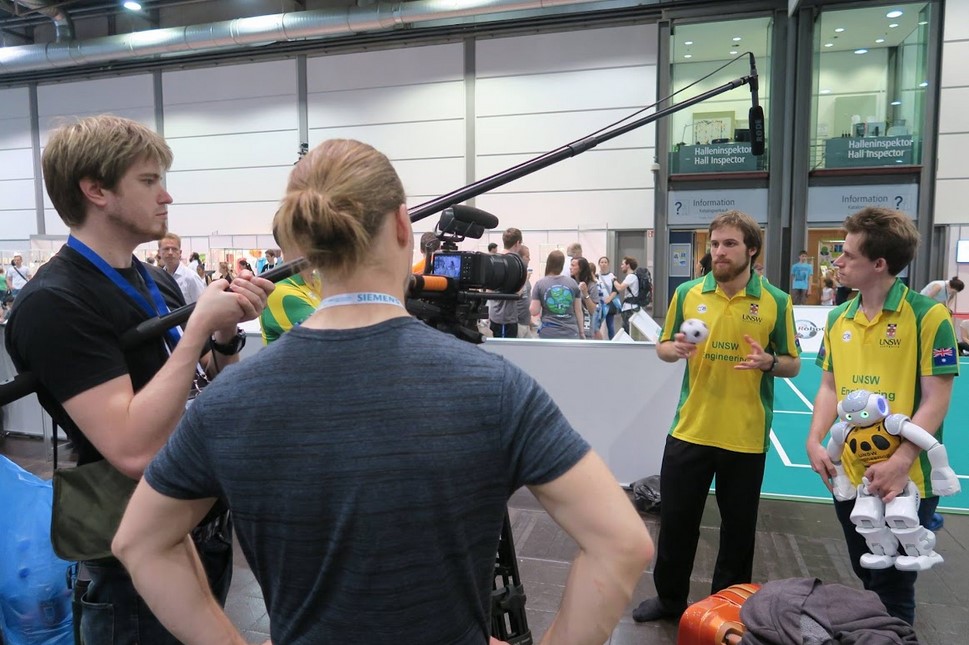
2016 Leipzig,Germany
World: 2nd round Qualifiers
Sponsor: NSW Trade and Investment
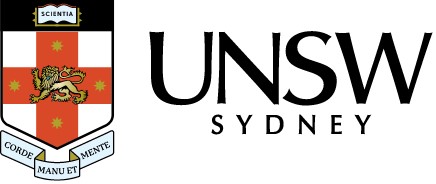
2015 Hefei,China
World: Champions
Technical Challenges:4th
Sponsor: NSW Trade and Investment
Supporters: Prospection, Microsoft
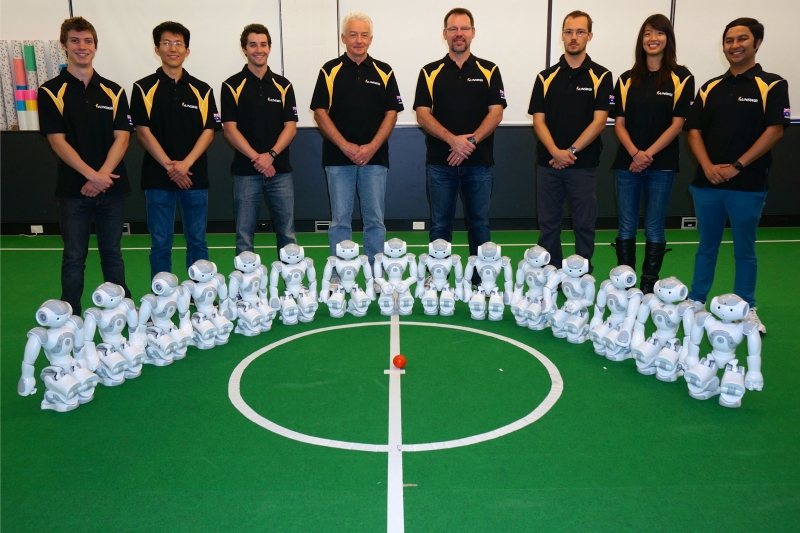
2014 Joao Pessoa,Brazil
World: Champions
Technical Challenges: 5th
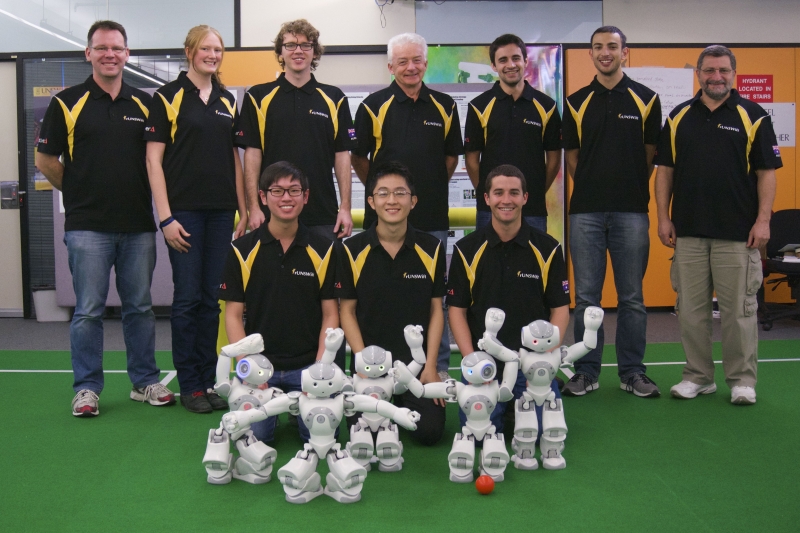
2013 Eindhoven,The Netherlands
World: 4th
Mixed Team
Competition: = 3rd
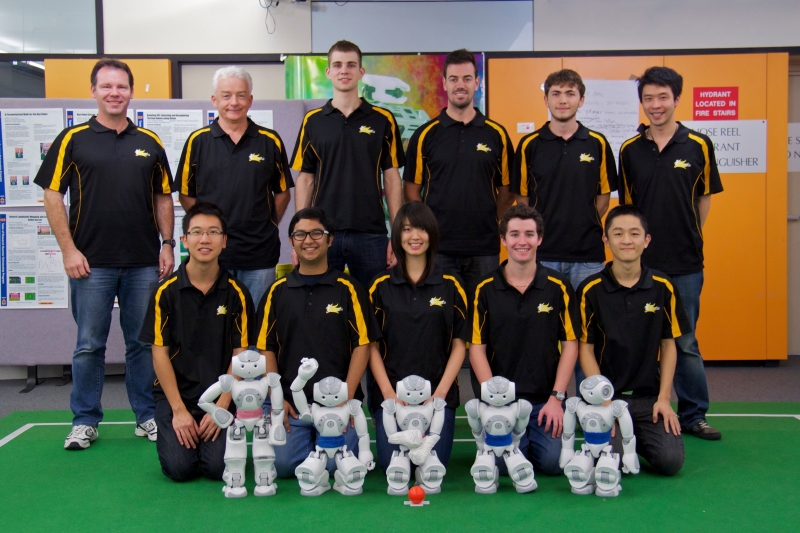
2012 Mexico City-Mexico
World: 3rd
Technical Challenges: 2nd
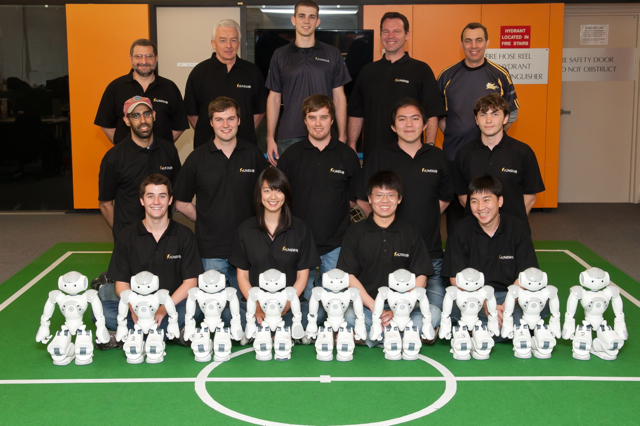
2011 Istanbul-Turkey
World: Quarter-finalists
Mixed Team
Competition: 3rd
Australia Open: 2nd
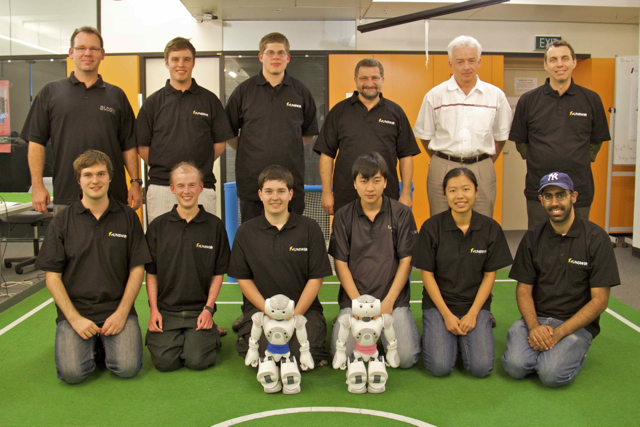
2010 Singapore
World: 2nd
Technical Challenges: 3rd
Australia Open: Not Held
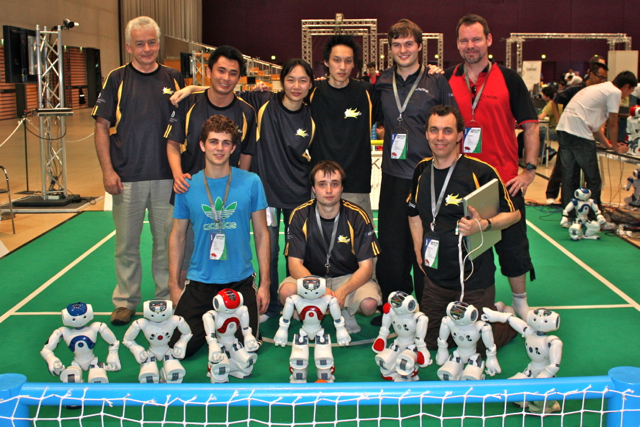
2009 Graz Austria
World: Qualifiers
Australia Open: Not Held
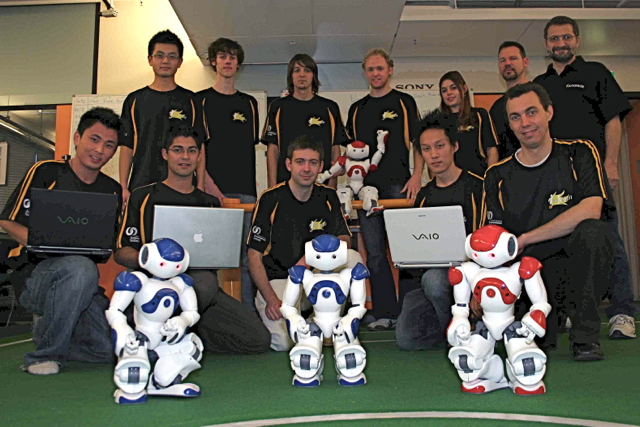
2008 Suzhou China
World: Quarter-finalists
Technical Challenges: Not Held
Australian Open: Not Held
4-Legged League
UNSW competed in the Sony 4-Legged League from 1999 to 2006 with amazing results, becoming World Champions three times, 2nd three times and 3rd once.
Mike Lawther remembers how UNSW became involved in the competition:
“Back in late 1998, Will Uther came out to UNSW to give a talk on the work he had done with the prototype dogs for RoboCup-98. The dogs were an experimental event in 98 – but in 99 they were to become an official league, and Sony were looking for expressions of interest.
We (as in John and me) told Claude that we thought this would make an intellectually stimulating (read cool and funky) thesis project. So we needed to write a proposal to Sony about who would be involved, and what we proposed to do. So we put together a proposal saying all the great machine learning stuff we planned to do, and that there would be a high powered team of brains behind it, including Claude, Graham Mann, Waleed Kadous, Malcolm Ryan, Jamie Westendorp, Phil Preston and John and me. Sony accepted our proposal in January (yay!) and it was all good to go. John and I got into reading everything dog related and RoboCup related that we could lay our hands on. And we planned the victory dances the dogs would do when they scored goals.”
Indeed it was a great feat to be selected – 24 teams from universities around the world applied, but only nine were selected. UNSW was the only team from the Southern Hemisphere.
“It wasn’t until April or so that we got our first dog (quickly christened StupidDog, because of all the trouble we had making him do anything!). StupidDog was really cool looking though – just the insides, no plastic skin, and things held in place with gaffer tape. It was probably May by the time we had the little bugger walking around. Sony documentation seemed slow in coming (we reckon that we were getting it as soon as it was being written). Recall that the competition was at the end of July. All of the great proposal went out of the window as we tried to make things work. Back in those days, we didn’t have a whole lab to work in – we got ourselves a small wedge shaped office, and we could set up a quarter of the field in it. We worked like this for a while, until the break at the end of session 1 when we moved into the robot lab. We had about a month to go, and this was the first time we had set up the full field (this lab had a big orange door, which tended to confuse the heck out of the poor little things, as they kept seeing what looked like a huge ball off in the distance).”
“By the time we had left for Stockholm, we had a striker that could eventually get a ball into the goal, and a goalie who would have probably been more effective if he was switched off. In the few days of competition, we managed to rewrite the goalie completely, tweak the striker, and retune our vision system. Luckily we had Phil there as our team manager (or mum) to make sure we ate and slept occasionally.”
Mike and John excelled beyond solving these teething problems (although some like the orange door still exist!) to come second at Stockholm. From their groundwork UNSW was able to become a major player in the competition and have great success. The following year Bernhard Hengst invented the P-Walk, which gave the dogs a low center of gravity and was over 300% faster than Sony’s walk! All of the strong teams in the competition emulated this walk.
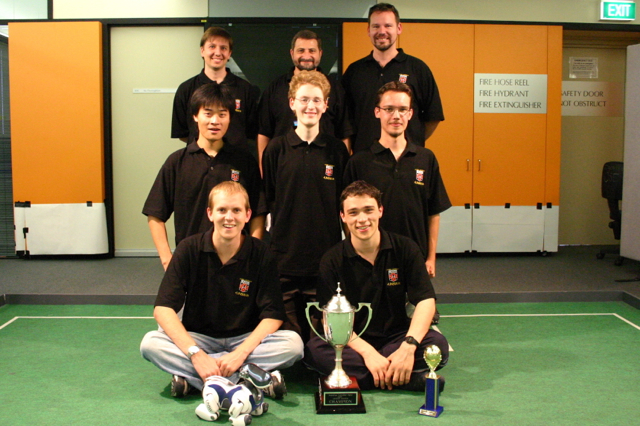
2006 Bremen,Germany
“rUNSWift”
World: 2nd
Australian Open: 1st

2004 Lisbon,Portugal
“rUNSWift”
World: Quarter Finalist
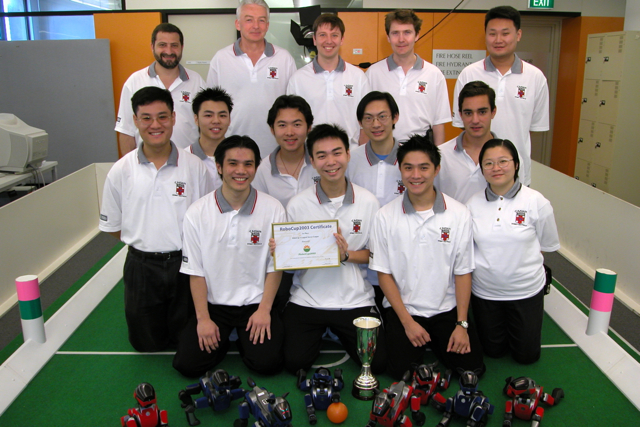
2003 Padua,Italy
“rUNSWift”
World: 1st
Technical Challenges: 2nd
Australian Open: 1st
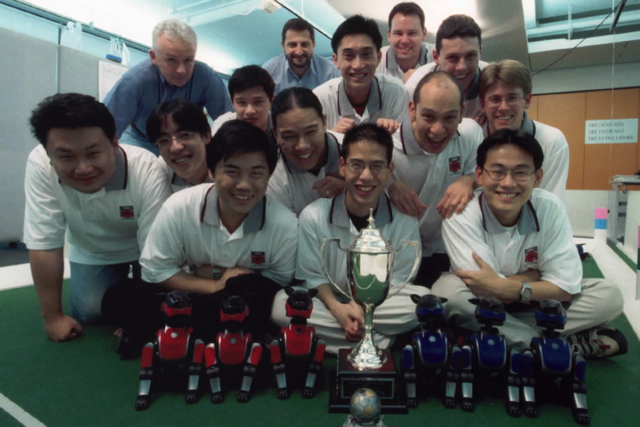
2002 Fukuoka/Busan,Japan/Korea
“rUNSWift”
World: 2nd
Technical Challenges: 1st
Australian Open: 1st
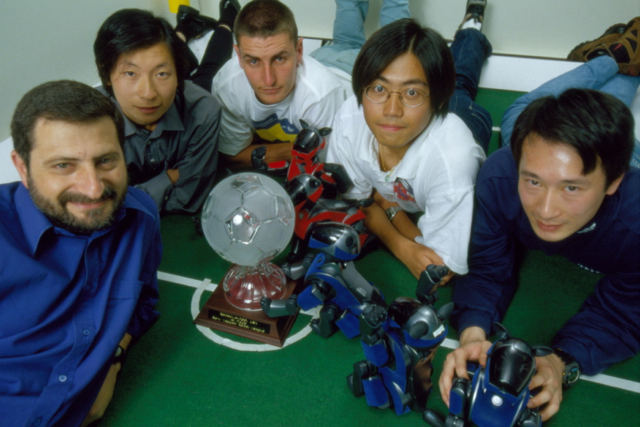
2001 Seattle,USA
“rUNSWift”
World: 1st
Mixed Team Competition: 1st
Australia Open: Not Held

2000 Melbourne,Australia
“UNSW United”
World: 1st
Technical Challenges: 1st
Australia Open: Not Held
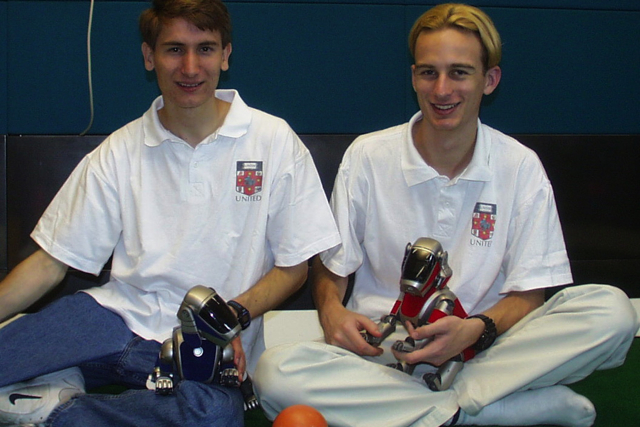
1999 Stockholm,Sweden
“UNSW United”
World: 2nd
Technical Challenges: 1st
Australia Open: Not Held
Robots Timeline

2019 – RoboCup – V6 Nao
7 touch sensors & inertia sensors
Intel Atom Quad Core 1.91GHZ Processor
4GB SSD RAM
32GB SSD
Ethernet/Wi-Fi 802.11b/g
2 cameras
2 speakers, multilingual sound synthesis capability
4 directional microphones

2017 – RoboCup – V5 Nao
Intel ATOM Z530 processor
1.6ghz
1GB RAM
Two 1.2 Megapixel digital cameras
640 x 480 pixels at 30fps
1280 x 960 pixels at 10 fps
wifi IEEE 802.11b/g/n
Linux
1 gyrometer with 3 axis
Metal gears

2008 RoboCup- V2 Nao
Geode LX800 processor
500MHz
512MB RAM
32MB Memory Stick
0.3 Megapixel digital camera
640 x 480 pixel 30fps
Wireless LAN (standard)
Linux

2004-2006 RoboCup AIBO
ERS-7 Model
64-bit RISC processor 576MHz MIPS R7000
64MB RAM
32MB Memory Stick
300,000-pixel digital camera 640 x 480 pixel 30fps
One Lithium ion battery
24 LEDs in face (45 total)
802.11b wireless ethernet (standard)
3 IR distance sensors
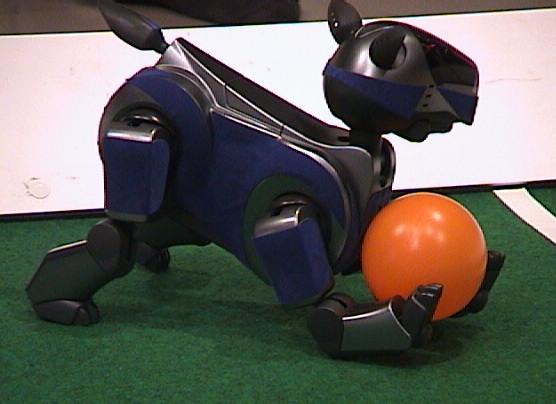
2001-2002 RoboCup AIBO
AIBO ERS-2106
4-bit RISC processor
192MHZ
32MB RAM
8MB Memory Stick
Camera: 100,000 pixel CMOS 176 x 144 pixels 25 fps
Stereo microphone and stereo speakers
One Lithium ion battery
4 LEDs in face, 2 in tail
802.11b wireless ethernet (add-on)
1 IR distance sensor
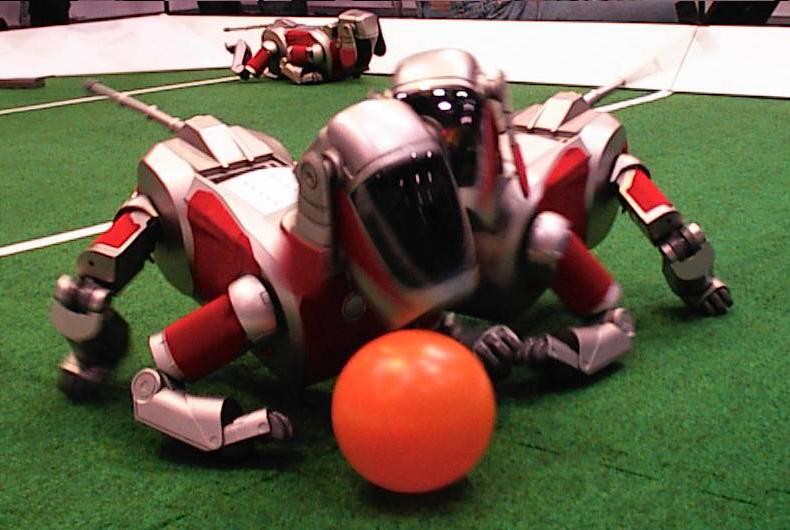
1999-2000 RoboCup AIBO
AIBO ERS-110
64-bit RISC processor
100MHZ
16MB RAM
8MB Memory Stick
camera: 180,000 pixel color CCD camera
Stereo Microphone, Mono speaker
Comes with two special Li-Ion Batteries
2 LEDs in face

